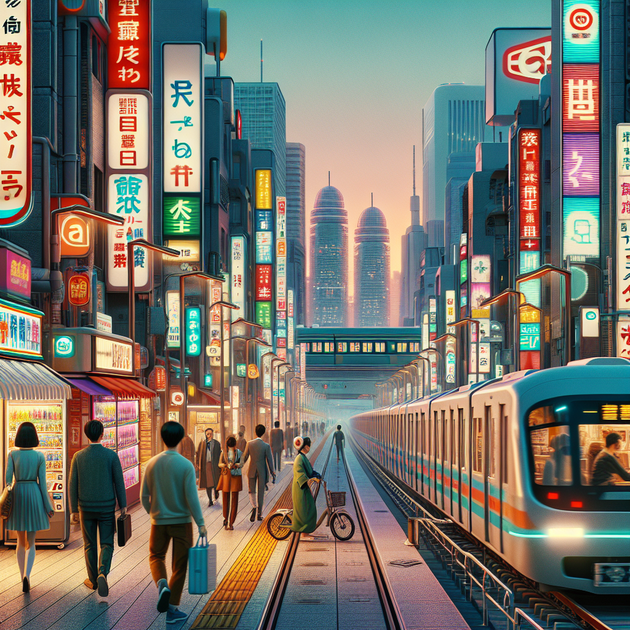Is Japan Really a Blueprint for the Cities of the Future?
How is it that in Tokyo—a city with nearly 14 million people—trains arrive on time down to the second and everything just seems to work? Anyone who’s experienced rush hour in Shinjuku Station (the busiest train station on Earth) has probably wondered if Japan holds some secret recipe for running not just a city, but an entire nation with mind-boggling efficiency. So here’s the big question: is Japan really a blueprint for the cities of the future, or is their approach too unique to recreate anywhere else?
What Makes Japanese Cities So Efficient?
Japan’s reputation for precision and smooth operation isn’t an accident. It comes from decades of focused effort in both infrastructure and culture. The primary keyword here—Japan cities—evokes images of spotless streets, clockwork trains, and neighborhoods where you can set your watch by the bus schedule.
Let’s break down what makes these Japanese cities tick:
– **Punctual Public Transit:** Tokyo’s subway trains are so reliable that even a 30-second delay comes with a formal apology.
– **Compact Urban Design:** Mixed-use neighborhoods make it easy to walk or bike rather than rely solely on cars.
– **Disaster Preparedness:** Earthquakes are common, so buildings and emergency systems are designed with resilience in mind.
– **Community Responsibility:** There’s a cultural expectation to keep public spaces clean and respect your neighbors.
– **Embracing Technology:** From high-speed bullet trains to robotic helpers in stores, innovation is woven into daily life.
These elements combine to create an environment where daily routines flow smoothly—even when faced with challenges like an ageing population or frequent natural disasters.
A Day in Tokyo: When Efficiency Feels Like Magic
I still remember my first morning commute in Tokyo. I was standing on the platform at Shinagawa Station at 8am, bracing myself for chaos worthy of any major metropolis. Instead, I found orderly lines of commuters boarding silent trains that departed exactly on schedule. No pushing or shouting—the whole process felt almost choreographed.
It struck me then that this wasn’t just about fancy infrastructure or strict rules; it was about everyone buying into the same idea—that public life works best when everyone plays their part.
Can Other Countries Copy This Model?
Now comes the tricky part. While many global cities admire what Japanese urban planners have achieved, copying it isn’t as easy as importing some bullet trains or hiring new engineers.
Here are some reasons why replicating Japanese-style city efficiency can be tough:
– **Cultural Buy-In:** Much of what works in Japanese cities depends on deep social norms about responsibility and harmony.
– **Long-Term Investment:** Decades (sometimes centuries) have gone into designing infrastructure that fits local needs.
– **Government Coordination:** National and local agencies work together closely—something not every country can manage easily.
– **Population Density:** What works in super-dense Tokyo might flop in sprawling American suburbs.
– **Adaptability:** Japanese cities update old systems creatively but don’t always chase trends just because they’re new.
What Lessons Can We Take For Future Cities?
Even if we can’t carbon-copy Japanese cities everywhere, there are some clear lessons for building better future infrastructure:
**Key Principles from Japan’s Urban Efficiency**
– Prioritize reliable public transportation over car dependency
– Design mixed-use neighborhoods to cut down commutes
– Invest steadily in disaster resilience and maintenance
– Encourage community involvement in keeping spaces clean
– Blend tradition with new technology instead of replacing everything at once
If other nations adapt even a few of these ideas—with their own twists—they could see big improvements in quality of life.
So…Is Japan Really Our Urban Future?
Japan offers an inspiring look at what’s possible when attention to detail meets collective effort. But whether its blueprint will shape global cities depends on more than just physical structures—it hinges on values and priorities that take years to develop.
Personally, I think we’ll see more “Japan-inspired” solutions popping up worldwide (driverless trains! compact neighborhoods! disaster drills!), but no one-size-fits-all answer. Each city will need its own blend of innovation and tradition.
What do you think—could your hometown pull off something like Tokyo’s efficiency? Or does every place have to write its own story?

Leave a Reply